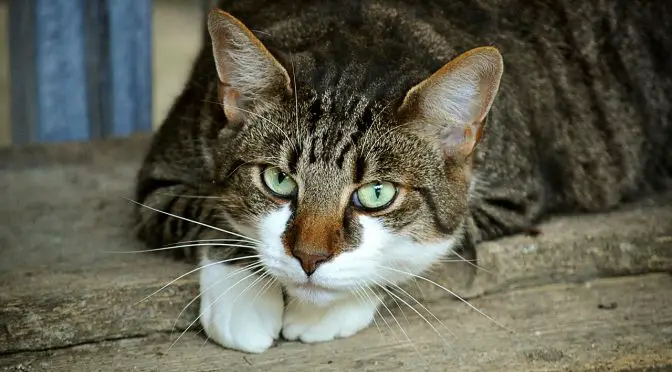If you’re a cat owner, dealing with territory marking can be frustrating. Cats mark their territory as a natural behavior to establish boundaries and communicate with other felines.
However, finding a solution when this marking occurs inside your house is essential, as it can cause unpleasant odors and damage to your belongings.
Addressing the issue of cat marking in your home effectively requires understanding the reasons behind it.
Common factors that provoke a cat to mark its territory include stress, territorial instincts, and medical issues. By determining the cause, taking preventive measures, and using the appropriate techniques to deter marking, you can create a more harmonious environment for your pet.
This article will provide you with the necessary information and tips to help you stop your cat from marking territory in your home.
We will cover methods to identify the triggers, how to create a stress-free environment for your feline friend, and discuss various techniques and products designed to eliminate marking behavior.
Recognize Cat Marking Behaviour
Identifying The Signs
Regarding cat marking behavior, there are several signs to look for. These include:
- Scratching: Cats may scratch surfaces, leaving visual marks and scents from glands in their paws.
- Rubbing: Cats often rub their faces or bodies against objects, transferring scent from glands on their cheeks, forehead, and sides.
- Spraying: A cat may spray a small amount of urine on vertical surfaces to mark their territory. This typically involves the cat standing with their tail raised and quivering.
Observing these behaviors can help you identify when your cat is marking territory in your home.
Differences Between Urination And Marking
It is essential to distinguish between normal urination and marking behavior to address the issue effectively:
| Urination | Marking |
|---|---|
| Large puddle | Small spray |
| Horizontal surface | Vertical surface |
| Multiple times | One-time occurrence |
By recognizing cat marking behavior and understanding the difference between marking and urination, you can take appropriate steps to prevent and manage the issue in your home.
Fundamentals Of Cat Territory
Cats are territorial animals, and their behavior is greatly influenced by their instincts to establish and protect their territory. In this section, we will explore the fundamentals of cat territory and why it plays a crucial role in their behavior.
Establishing Territory
Cats establish their territory by marking or scenting their environment. This can be done through various methods, such as:
- Cats spray urine to mark their territory and send messages to other cats. This scent contains pheromones, which carry information about the cat’s age, sex, and reproductive status.
- Scratching objects: When cats scratch objects, they remove the outer layers of their claws and leave a visual mark along with their scent gland secretions.
- Rubbing their body against objects: Cats have scent glands located in their cheeks, paws, and temples. When they rub their body against objects, they deposit their scent, claiming the area as theirs.
Threats To Territory
Invasion or perceived threats to a cat’s territory can trigger stress, anxiety, and aggressive behaviors. Some common scenarios that may threaten a cat’s territory include:
- New pets in the home: Introducing a new pet to the household can create tension as the established cat may feel threatened by the newcomer, leading to territorial behaviors like spraying or increased aggression.
- Outdoor cats: Cats roaming outdoors may come in contact with other cats, leading to territorial disputes and marking behaviors.
- Changes in the environment: Alterations in the home environment, such as rearranging furniture or moving items, can make a cat feel insecure and prompt them to re-establish their scent marks.
Understanding and addressing the root causes of territorial marking and associated stress can help prevent unwanted behaviors and maintain a harmonious household.
Proper socialization, gradual introduction of new pets, and a consistent, comfortable environment are essential strategies to prevent territorial disputes and ensure your cat’s well-being.
Reasons For Cat Marking
Stress Factors
Cats may mark their territory due to various stress factors in their environment. Changes in their surroundings, such as new furniture or a rearranged room layout, can trigger stress and lead to marking.
Additionally, conflicts with other house pets, a new addition to the family, or even outdoor cats wandering near the windows can create anxiety and cause a cat to mark.
Health Issues
Health issues can sometimes lead to cat marking. If a cat is experiencing pain during urination, they may associate the discomfort with their litter box, causing them to avoid it and mark other areas of the house.
Potential health problems like urinary tract infections, bladder stones, or kidney issues can affect a cat’s marking behavior. It is crucial to consult with a veterinarian if health issues are suspected.
Unfixed Cats
Unfixed cats, particularly males, are more likely to mark their territory. The higher levels of hormones in intact cats tend to make them more territorial and prone to urine spray as a form of communication. Spaying or neutering your cat can significantly reduce marking behavior and provide additional health benefits.
Preventing Territory Marking
Providing Litter Boxes
To prevent territory marking in your home, you must provide sufficient litter boxes for your cat. Ideally, there should be one litter box per cat plus an additional one
. Ensure all boxes are placed in quiet, easily accessible locations away from busy areas or noisy appliances. Regularly clean and maintain these litter boxes to ensure comfort, and consider using a cat-safe litter attractant to encourage their use.
Clean Marked Areas Immediately
Cleaning marked areas immediately is crucial in deterring your cat from marking territory inside the house. When a cat marks their territory with urine, strong scents remain, which may encourage further marking.
Use an enzyme-based cleaner specifically designed for cat urine to break down the smell and remove any lingering odors.
Additionally, if you notice your cat persistently marking a particular area, try making the space less appealing.
Examples include placing aluminum foil or double-sided tape over the area, which are textures cats tend to avoid. Alternatively, place their food or water dish in the area; cats rarely mark where they eat or drink. Taking these preventative measures can help create a comfortable space for your cat while curbing unwanted territory-marking behavior.
Approaches To Stop Cat Marking
Behavioural Modifications
One of the effective ways to stop cat marking in the house is through behavioral modifications. Start by identifying the potential triggers for marking, such as stress, environmental changes, or conflicts with other pets. Address these issues as much as possible. Some techniques to consider include:
- Providing multiple litter boxes in different areas of the house
- Cleaning soiled areas thoroughly with enzymatic cleaners
- Offering your cat more vertical space, like shelves or cat trees, to help them feel secure
It’s essential to be patient during this process. Remember that consistency and positive reinforcement are crucial when trying to change a cat’s behavior.
Use Of Synthetic Pheromones
Synthetic pheromones can be an effective solution for curbing cat marking behavior, as they mimic the natural scent that cats use to mark their territory.
These pheromones are available in various forms, such as sprays, diffusers, and even collars. Consider using them in areas where your cat might be marking, but make sure to follow the product instructions closely for optimal results.
Consulting A Vet
If cat marking persists despite trying behavioral modifications and synthetic pheromones, it’s time to consult a veterinarian. They can rule out any potential medical issues contributing to the marking behavior, such as urinary tract infections or anxiety disorders.
Additionally, veterinarians can recommend specific medications or treatments to manage the underlying causes effectively.
Remember, every cat is different, and finding the appropriate approach to stop cat marking in the house may take time and effort. But with patience, consistency, and professional guidance, it’s possible to create a more harmonious living environment for both you and your cat.
Conclusion
Taking steps to stop cat-marking territory in the house can be challenging, but consistent effort and patience can be achieved. It is essential to understand that cats mark their territory as a natural behavior, and addressing the underlying causes, rather than punishing them, will yield more effective results.
Addressing environmental factors such as cleanliness, providing enough space and resources, and creating a stress-free environment are crucial in reducing the instances of cat marking. Be sure to clean marked areas thoroughly to eliminate any remaining scents; this will help deter future markings.
Additionally, addressing any medical or behavioral issues is necessary. Consult with a veterinarian to rule out any medical concerns, and if needed, consult with a professional cat behaviorist to develop an individualized plan to address the cat’s specific needs.
In conclusion, stopping a cat from marking territory in the house might require patience and dedication. It is essential to consider the cat’s physical, emotional, and territorial needs to create a harmonious living environment for both the pet and the owner. By understanding and addressing the root causes of cat marking, owners can help their cats feel more secure and create a more enjoyable living space for the entire household.
[su_box title=”Affiliate Disclosure”]This website is supported by its readers. Please assume that all links are affiliate links. If you make a purchase from one of the links we will make a commission from Amazon. Thank you.[/su_box]




